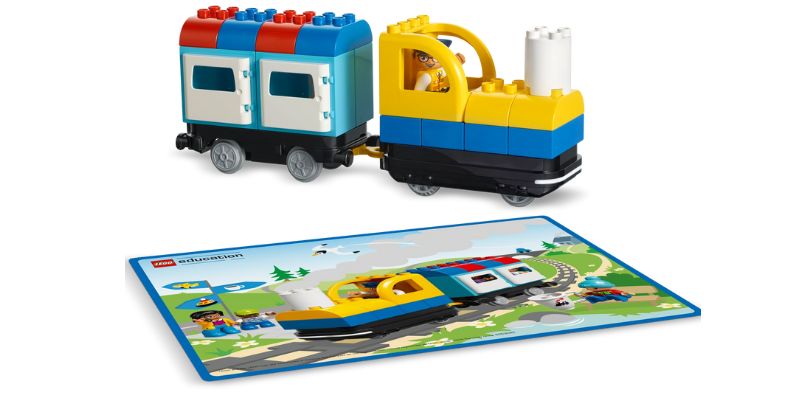Welcome to the world of Coding Express, a fun and engaging way for Pre-K and Kindergarten students to explore important concepts like traffic rules and problem-solving. Using interactive learning & play, the Coding Express set, notably in Lesson 7 titled Journey: Trouble on the Road, teaches young learners the fundamentals of coding ideas and helps them comprehend how “traffic signs” operate. In addition to having fun designing tracks, the main goal of this lesson is to teach kids the value of traffic signs and regulations in assisting with potential roadside issues.
This interactive learning unit is designed for students aged 4-6 and typically lasts 30-45 minutes. It is an advanced lesson but is easily adaptable based on the needs of your students. The Coding Express app is key to making this lesson dynamic, but an unplugged version can also be used if you prefer to skip the technology aspect.
Engage – Introducing Traffic Rules
Introduce the lesson by having a discussion about driving rules with the students. Ask open-ended questions such as:
- Do you know any traffic rules? What are they?
- Why is it necessary to follow traffic rules?
This conversation will help the students start thinking about the importance of following rules and how traffic signs help us stay safe on the road. Then, introduce the idea that traffic signs are visual reminders of these rules, guiding drivers to avoid danger and make the roads safer for everyone.
For added fun, turn the classroom into a mini driving arena! Using the four traffic signs included in the Coding Express set (stop, animal ahead, construction work ahead, & railway crossing), have students guess what each sign means. You can place the signs around the classroom and ask the students to pretend they’re driving high-speed trains. When they approach a sign, they must ‘slow down’ or ‘stop’ based on the rules they’ve just learned. This playful activity gets them moving and thinking about how traffic signs function.
Building and Problem-Solving with LEGO® Education
Now it’s time for the students to get hands-on with interactive learning! In this phase, students will form small groups to build a Y-shaped track using the Coding Express set by LEGO® Education. Once the track is built, they can place their models, representing buildings or stations, around the track. This adds a layer of imagination and storytelling to the lesson, as students start envisioning a real-world journey.
Randomly place action bricks along the track. These bricks introduce specific actions or problems for the train, such as stopping, changing direction, or slowing down. Using the Coding Express app by LEGO® Education, students will take turns driving their train on the track, using different buttons to see what happens when the train passes each action brick.
This part of the lesson encourages experimentation. As students explore the various functions of the app, they will encounter problems like traffic jams or wrong turns, giving them the opportunity to solve these issues using traffic signs they’ve already learned about.
Finding Solutions
Now that the students have seen how their trains move and respond to different situations, it’s time to reflect on what they’ve learned. Engage into a discussion by asking:
- What happened when the train passed each action brick?
- Which traffic sign would help solve the problem you faced?
Encourage the students to think critically about the scenarios they’ve encountered during the interactive learning phase. This step helps solidify the connection between traffic signs and solving real-life traffic problems.
Elaborate – Creating and Playing with Traffic Signs
Invite them to invent their own traffic signs or models, imagining new ways to keep drivers safe. These creations can be placed around the track, and students can explain why they made each sign and how it contributes to road safety.
This is also an opportunity to discuss other traffic safety measures. Ask questions like:
- Can you think of any other important things to keep in mind when driving?
- What are other ways people stay safe on the road?
Evaluate – Observing Student Progress
The final phase is all about evaluation. As students work through the lesson, teachers can observe their progress using an observation checklist:
- Did the students successfully create the Y-shaped track?
- Were they able to describe the journey their train took?
- Did they demonstrate an understanding of the sequence of events on their trip?
Encourage students to explain their thinking and decision-making processes throughout the interactive learning activity. This gives insight into their understanding of traffic signs, road safety, and basic coding concepts.






Recent Comments